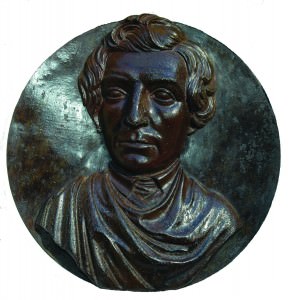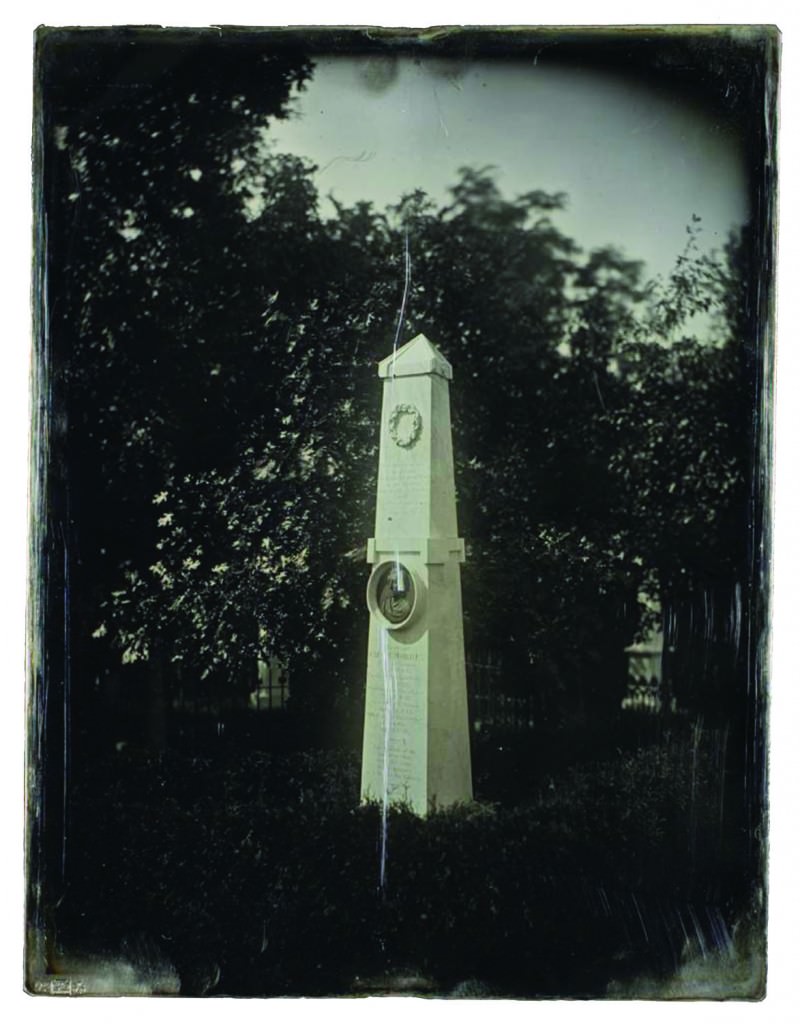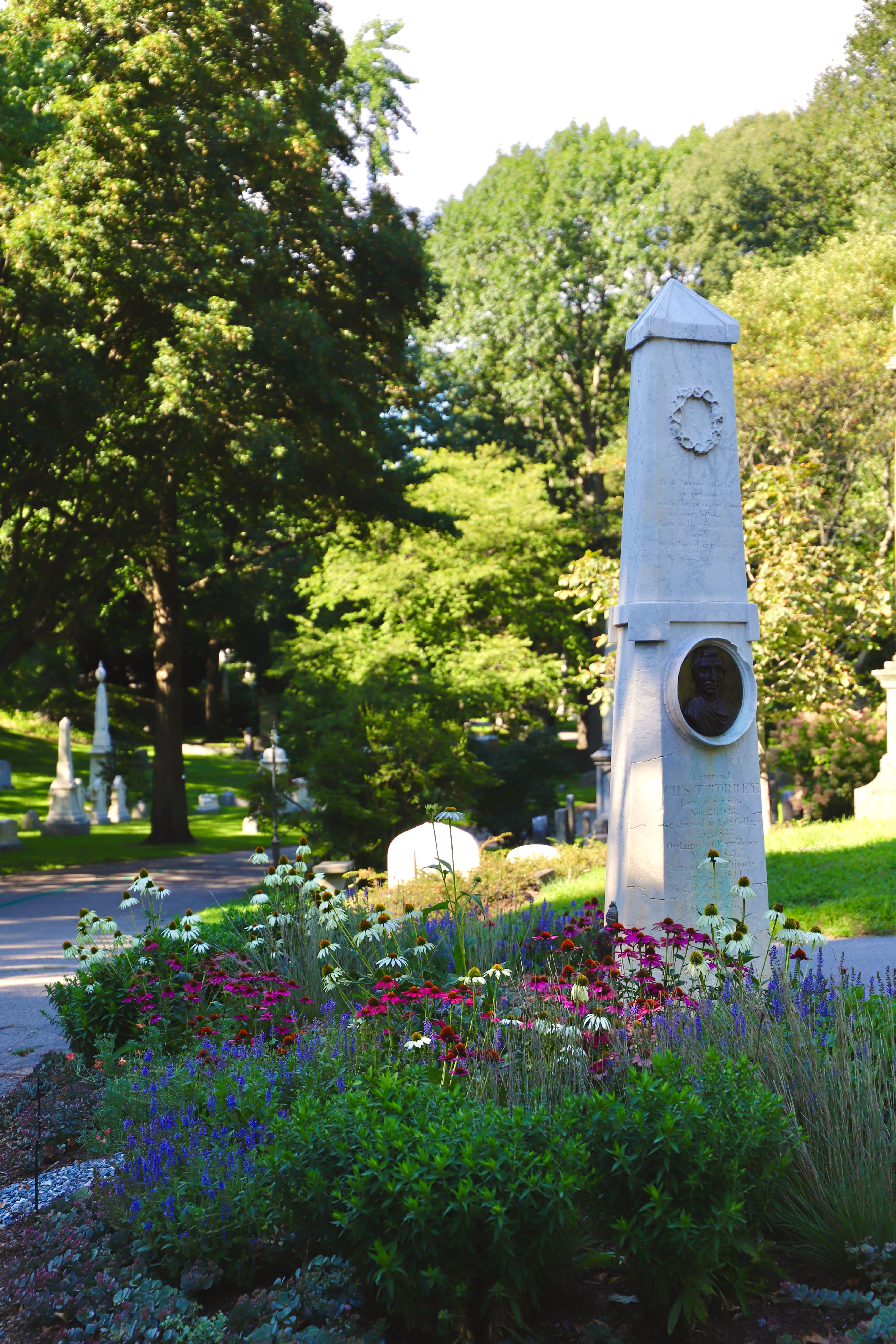
Rev. Charles Turner Torrey Monument
Monument to the Great Abolitionist and “the Martyr of Liberty”
Born in Scituate, Massachusetts, Charles T. Torrey (1813 – 1846) graduated from Yale College in 1833 and was ordained as a Unitarian minister in 1837. He went on to practice a ministry in Baltimore, Maryland. Torrey devoted himself to the cause of anti-slavery, working in the Underground Railroad where he assisted hundreds of freedom seekers—mothers, fathers, brothers, and sisters—to escape from bondage to the north. “He entered into the anti-slavery cause with his whole heart and soul, in which he died,” the pastor and author Luther Lee wrote.[1] In 1844, Torrey received a sentence of six years in a Baltimore prison for his work on behalf of Blacks. When he became sick, his friends made a public appeal for his release, but he never received a pardon from the Governor of Maryland. He died of tuberculosis in his prison cell in 1846.
At the time the press noted that Torrey’s death was producing “a powerful sensation, which pervades the whole community, from Maine to Wisconsin.”[2] The Friends of the American Slave Association, an organization of Boston abolitionists, brought the minister’s body back to Boston, where the Rev. Joseph Lovejoy held a service in Tremont Temple. Nearly three thousand people attended, including many African Americans, who “thronged in great numbers to pay the last tribute of respect to one who had suffered so much for their kinsmen . . . .”[3] The Harvard librarian John Langdon Sibley noted in his diary that “the body was carried to Mount Auburn &, ‘tis said, was followed notwithstanding the rain by forty-seven carriages.”[4]
In 1846, the Friends of the American Slave commissioned local stone carvers Joseph and Thomas A. Carew to design a memorial commemorating Torrey. “A monument to his memory will be raised in [Mount Auburn], in the midst of the green beauty of the scenery which he loved in life—and side by side with the honored dead of Massachusetts,” the poet and abolitionist John Greenleaf Whittier wrote. “Thither let the friends of humanity go to gather fresh strength from the memory of the martyr. There let the slaveholder stand, and as he reads the record of the enduring marble, commune with his own heart, and feel that sorrow which worketh repentance.”[5]
An inscription on one side of the capped marble obelisk documents the details of Torrey’s arrest, conviction, and death, noting that he died a “victim of his suffering.” Another side of the monument features a bas-relief of a kneeling woman with the inscription: “Where NOW beneath his burthen, The toiling slave is driven. Where now a tyrant’s mockery, Is offered up to heaven. THERE shall his praise be spoken. Redeemed from falsehood’s ban, When the fetters shall be broken. And the SLAVE shall be a MAN.”
The third side features a portrait relief of Torrey and the dates of the martyr’s birth, graduation, ordination, arrest, and death. A laurel wreath, a symbol of victory, adorns the top of the monument accompanied by the poignant words Torrey wrote in prison to his wife: “It is better to die in prison with the peace of God in our breasts, than to live in freedom with polluted conscience.”
The monument stands on a triangular lot at the intersection of Fir and Spruce Avenues. Situated in a visibly prominent location of the Cemetery, Torrey’s memorial easily catches the attention of visitors. Early guidebooks to Mount Auburn feature the monument with an engraving depicting those on foot and in horse-drawn carriages passing by the obelisk. The famous studio of Southworth and Hawes, which photographed many others sympathetic to the anti-slavery movement, created an ethereal daguerreotype view of the monument, bringing the memorial further exposure (above).
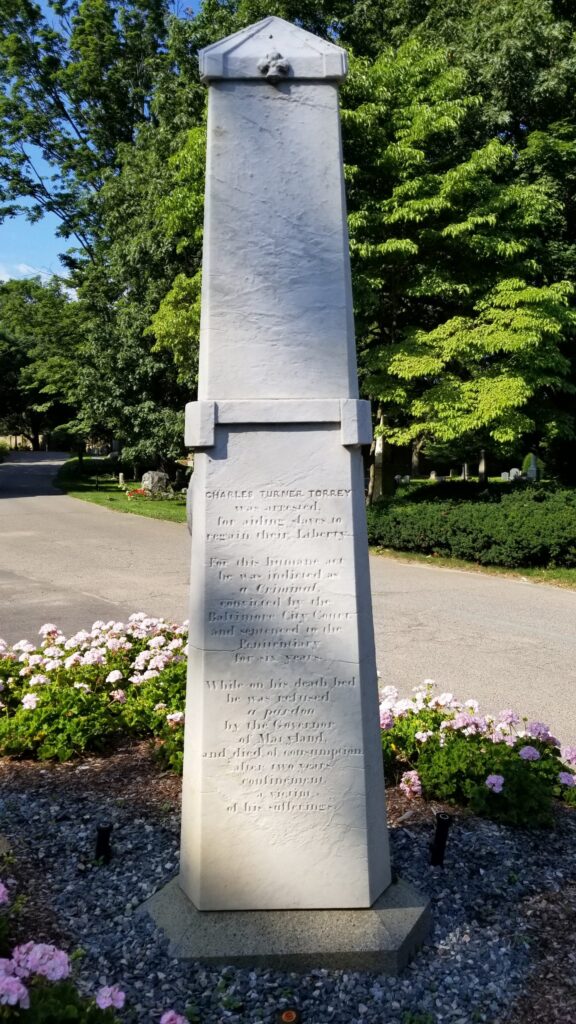
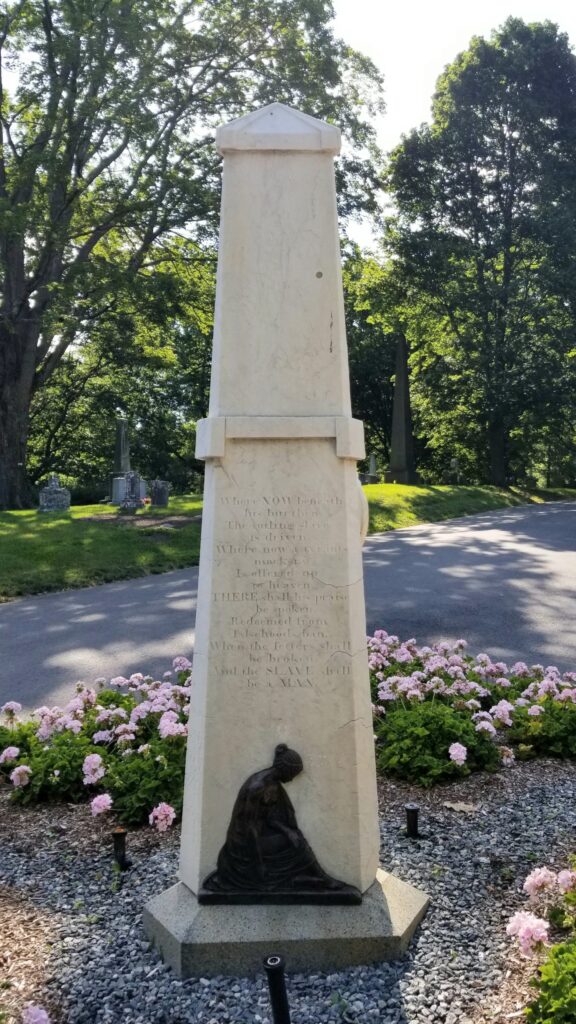
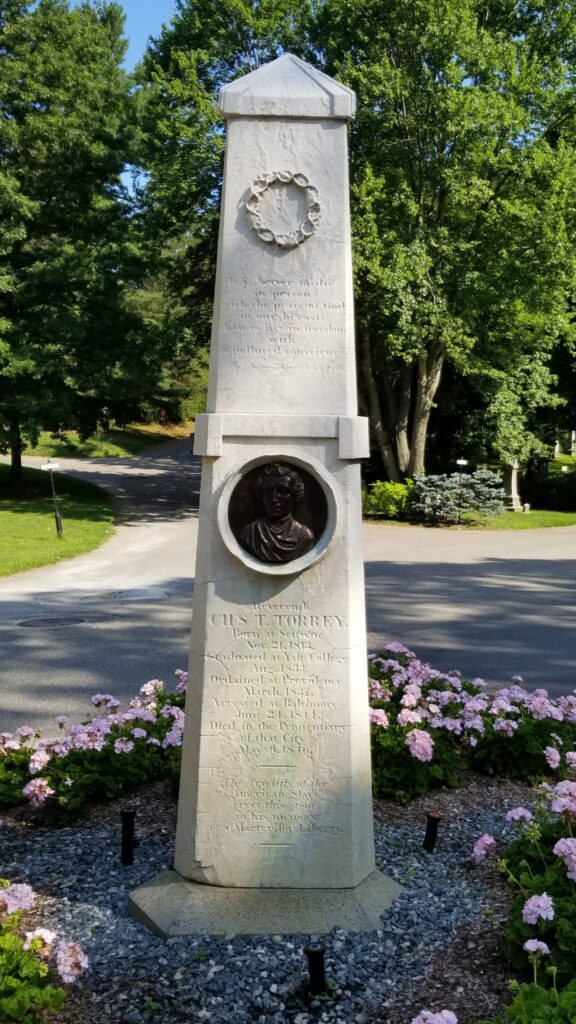
The Memorial to Charles Turner Torrey. Mount Auburn Cemetery, 2021.
In addition to raising support for the monument, Torrey’s friends and colleagues established a fund for flowers to decorate the lot. Several years after Torrey’s death, Luther Lee remarked on the generous acts Torrey’s friends took to preserve the memory of “the martyr of liberty.” Lee wrote, “His friends took charge of his body . . . that they have deposited at Mount Auburn. The marble column shall point out the place where it lies . . . and let everyone that shall visit his tomb and read his epitaph, whisper peace.” [6]
Find the Monument to Charles Turner Torrey at Lot 1282 on Spruce Avenue.
Footnotes:
[1] Luther Lee, “The Supremacy of the Divine Law: A Sermon, preached on the Occasion of the death of Rev. Charles Turner Torrey.” New York, NY, 1846, p. 7.
[2] New Jersey Freeman in J. C. Lovejoy, Memoir of Rev. Charles T. Torrey. Boston: John P. Jewett & Co., 1847, p. 331.
[3] J. C. Lovejoy, Memoir of Rev. Charles T. Torrey, Boston: John P. Jewett & Co., 1847, p. 294.
[4] John Langdon Sibley, Diary Entry, May 18, 1846. Harvard University Archives.
[5] J.G. Whittier in J.C. Lovejoy, Memoir of Rev. Charles T. Torrey, p. 299.
[6] Lee, “The Supremacy of the Divine Law,” p. 8.

